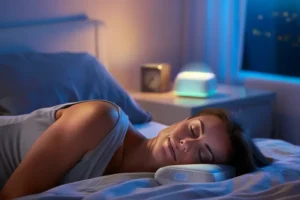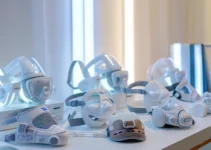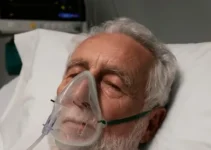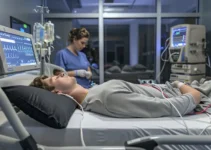Many individuals struggle with sleep apnea but find CPAP machines cumbersome or uncomfortable. Exploring alternatives for managing this condition can provide relief and enhance sleep quality without relying on continuous positive airway pressure devices. In this article, we dive into various non-CPAP treatments for sleep apnea, ranging from lifestyle changes and positional therapy to innovative medical devices and surgical options. Understanding these alternatives could be key to improving your sleep health and overall quality of life.
Understanding Sleep Apnea
Sleep apnea is a common yet often undiagnosed sleep disorder that can significantly impact one’s quality of life and overall health. Understanding sleep apnea involves exploring its various types, causes, and potential treatments. By being informed, individuals can seek appropriate medical advice and interventions to improve their sleep and health.
This article will delve into the basics of sleep apnea, including its definition, the underlying causes, and the risk factors associated with this sleep disorder. Through a comprehensive understanding, we aim to empower readers with the knowledge to take proactive steps in managing their sleep health.
What is Sleep Apnea?
Sleep apnea is a serious sleep disorder characterized by repeated interruptions in breathing during sleep. These interruptions, known as apneas, can last from a few seconds to a minute and may occur multiple times per hour. There are three main types of sleep apnea:
- Obstructive Sleep Apnea (OSA): The most common form, caused by a blockage of the airway, usually when the soft tissue in the back of the throat collapses during sleep.
- Central Sleep Apnea (CSA): Occurs when the brain fails to send proper signals to the muscles that control breathing.
- Complex Sleep Apnea Syndrome: Also known as treatment-emergent central sleep apnea, this is a combination of OSA and CSA.
Obstructive Sleep Apnea (OSA) is the most prevalent, affecting millions of individuals worldwide. Symptoms commonly associated with sleep apnea include loud snoring, daytime fatigue, morning headaches, and difficulty concentrating. However, because it occurs during sleep, many individuals are unaware they have this condition.
Causes and Risk Factors
The causes of sleep apnea can vary, depending on the type. Obstructive Sleep Apnea is often related to physical blockages in the upper airway, which may result from excess weight, anatomical abnormalities, or relaxed throat muscles. Central Sleep Apnea, on the other hand, is usually linked to underlying medical conditions that affect the brain’s ability to control breathing.
Several risk factors can increase the likelihood of developing sleep apnea, including:
- Excess weight: Being overweight or obese significantly increases the risk of airway obstruction during sleep.
- Neck circumference: A larger neck size can narrow the airway, making obstruction more likely.
- Aging: Sleep apnea occurrence increases with age due to physiological changes in airway muscle tone.
- Genetics: Family history of sleep apnea can suggest an inherited predisposition.
- Gender: Men are more likely to develop sleep apnea than premenopausal women.
- Medical conditions: Conditions such as high blood pressure, heart disease, and Type 2 diabetes are commonly associated with sleep apnea.
Understanding these causes and risk factors is crucial for early detection and management of sleep apnea. If left untreated, sleep apnea can lead to severe health complications, including cardiovascular diseases, stroke, and depression.
To continue learning about sleep disorders and their impact on overall health, don’t miss our other articles that provide further insights into diagnosis, treatment options, and lifestyle changes to promote better sleep.
Alternative Treatments for Sleep Apnea
Sleep apnea is a common condition characterized by repeated interruptions in breathing during sleep. These interruptions can lead to poor sleep quality and several health issues. Although CPAP (Continuous Positive Airway Pressure) therapy is widely recognized as the standard treatment, some patients find it uncomfortable or challenging to use consistently. Fortunately, there are several alternative treatments available that can effectively manage sleep apnea symptoms. These alternatives include lifestyle changes, oral appliances, and positional therapy, each offering unique benefits.
Understanding these alternatives is crucial for patients seeking to explore different options or those who have not found success with traditional CPAP therapy. While each treatment has its strengths, combining various methods often yields the best results. Let’s delve into these alternative treatments in more detail.
Lifestyle Changes
One of the most effective ways to manage sleep apnea symptoms is through lifestyle modifications. Certain practices and habits can exacerbate the condition, while others can significantly alleviate it. For instance, achieving and maintaining a healthy weight is critical. Obesity is a major risk factor for sleep apnea, as excess tissue in the throat can block the airway.
Additionally, individuals should avoid alcohol and sedatives, especially before bed. These substances relax the muscles in the throat, increasing the risk of airway obstruction during sleep. Smoking cessation is also essential because smoking can cause inflammation and fluid retention in the upper airway, further worsening sleep apnea symptoms.
Incorporating regular exercise into one’s routine not only aids in weight management but also improves overall respiratory strength and endurance. It’s recommended to establish a consistent sleep schedule and create an optimal sleeping environment to enhance sleep quality. By making these simple yet impactful lifestyle changes, many people experience a reduction in the severity of their sleep apnea symptoms.
Oral Appliances
Oral appliances, also known as mandibular advancement devices (MADs), are another viable alternative for treating sleep apnea. These devices resemble mouth guards and are designed to reposition the lower jaw and tongue forward, keeping the airway open during sleep. Oral appliances are particularly effective for patients with mild to moderate obstructive sleep apnea.
There are several benefits to using oral appliances. They are less bulky and more portable compared to CPAP machines, making them a convenient option for travel. Additionally, many patients find them more comfortable and easier to adapt to than CPAP masks. Studies have shown that oral appliances can significantly reduce the frequency and severity of apnea episodes.
However, it is essential to have these devices fitted by a qualified dental professional to ensure maximum effectiveness and comfort. Regular follow-up visits are necessary to adjust the device as needed and to monitor the patient’s progress. Oral appliances can be a powerful tool in managing sleep apnea when used correctly under professional supervision.
Positional Therapy
Positional therapy is a lesser-known yet effective treatment for sleep apnea, particularly for individuals whose condition is positional-dependent. This means their sleep apnea is more pronounced when they sleep on their back compared to other positions. Positional therapy aims to encourage patients to sleep on their side rather than their back.
Several devices are available to assist with positional therapy, including special pillows, wearable belts, and vibrating devices that prompt the sleeper to change positions when they roll onto their back. By maintaining a side-sleeping position, the airway is less likely to collapse, thereby reducing apnea events.
While positional therapy can be highly effective for certain individuals, it may not be suitable for everyone. It is often best used in conjunction with other treatments like lifestyle changes or oral appliances for optimal results. Consistency and commitment to this approach are key to achieving long-term benefits.
For those exploring alternatives to CPAP therapy, these treatments offer promising options. By integrating lifestyle changes, considering oral appliances, and utilizing positional therapy, patients can find relief from sleep apnea symptoms. Explore our other articles to gain a deeper understanding of each treatment method and discover the best approach for your specific needs.
Emerging Therapies
In the realm of dental implantology and bone regeneration, new therapies are constantly being developed to enhance treatment success and patient outcomes. These emerging therapies are driven by groundbreaking research and the advent of innovative technologies, providing an expanded arsenal of tools for dental professionals. Understanding these advancements helps to stay ahead in the rapidly evolving field of dental care.
One critical focus of emerging therapies is to improve the process of osseointegration, which is crucial for the stability and long-term success of dental implants. By leveraging biomaterials and growth factors, researchers aim to enhance the body’s natural healing processes, ensuring that implants integrate more seamlessly with the surrounding bone tissue.
Surgical Interventions
Advances in surgical techniques have revolutionized the way dental implants are placed and how bone regeneration is approached. One such intervention is the use of minimally invasive procedures. These techniques not only reduce patient discomfort but also significantly decrease recovery time, resulting in a more favorable experience for the patient.
Another promising surgical intervention is the application of platelet-rich fibrin (PRF). PRF is derived from the patient’s own blood and contains high concentrations of platelets, leukocytes, and growth factors essential for tissue regeneration. Studies have shown that PRF can significantly enhance bone regeneration and improve the overall success rate of dental implants.
Moreover, the introduction of computer-guided surgery has transformed dental implantology. By using advanced imaging techniques and software, dentists can create precise surgical guides that ensure the exact placement of dental implants. This technology minimizes the risk of human error and allows for a more predictable outcome.
Innovative Technology
The integration of innovative technology in dental practices is a game-changer for both practitioners and patients. One such example is the use of 3D printing. This technology allows for the creation of custom prosthetics and surgical guides, tailored specifically to each patient’s anatomy. The precision and customization that 3D printing offers are unparalleled, leading to better fitting prosthetics and more successful implant placements.
Another cutting-edge technology making waves in implantology is the use of bioceramics and biomimetic materials. These materials are designed to mimic the natural properties of bone, promoting more efficient osseointegration. Research has shown that bioceramics can enhance bone growth and reduce the risk of implant failure. Additionally, nanotechnology is being explored for its potential to revolutionize dental implants. By manipulating materials at the nanoscale, scientists aim to create surfaces that can better integrate with bone and resist bacterial colonization. This technology holds promise for extending the lifespan of dental implants and improving patient outcomes.
Improvements in digital dentistry, such as intraoral scanners and CAD/CAM systems, have also streamlined the implant planning and placement process. These tools enable more accurate diagnostics and treatment planning, leading to more precise and effective interventions. The continuous advancement in surgical interventions and innovative technology in dental implantology and bone regeneration opens new doors for more effective and patient-friendly treatments. Keep exploring our other articles to stay updated on the latest breakthroughs and developments in the field.
Understanding Non-CPAP Solutions for Sleep Apnea
Exploring alternative treatments for sleep apnea can offer solutions for those who find CPAP machines uncomfortable or ineffective. Here are some frequently asked questions about managing this sleep disorder without the use of CPAP devices.
What are some effective alternative treatments for sleep apnea?
Several alternatives to CPAP therapy exist, including oral appliance therapy, which involves wearing a device that holds the tongue or jaw in a forward position to keep the airway open. Positional therapy, which involves wearing a device that prevents sleeping on the back, can also help, as sleep apnea symptoms are often worse in this position. Additionally, lifestyle changes such as losing weight, decreasing alcohol consumption, and quitting smoking may significantly improve symptoms.
Is surgery a viable option for treating sleep apnea without CPAP?
Surgery may be considered for those who do not respond to other treatments. Procedures like uvulopalatopharyngoplasty (removal of excess tissue from the throat), maxillomandibular advancement (repositioning of the jaw to enlarge the airway), and implants that stimulate the nerve controlling the tongue can be explored. Each surgical option has different implications and should be carefully evaluated with a healthcare provider based on the individual’s specific condition and anatomy.

My name is Salman Kapa, a 73-year-old expert in bone regeneration and dental implantology. With decades of experience in the field, I am dedicated to advancing our understanding of oral health and hygiene. Through my research and writing, I aim to contribute to the development of innovative solutions in dental care.




